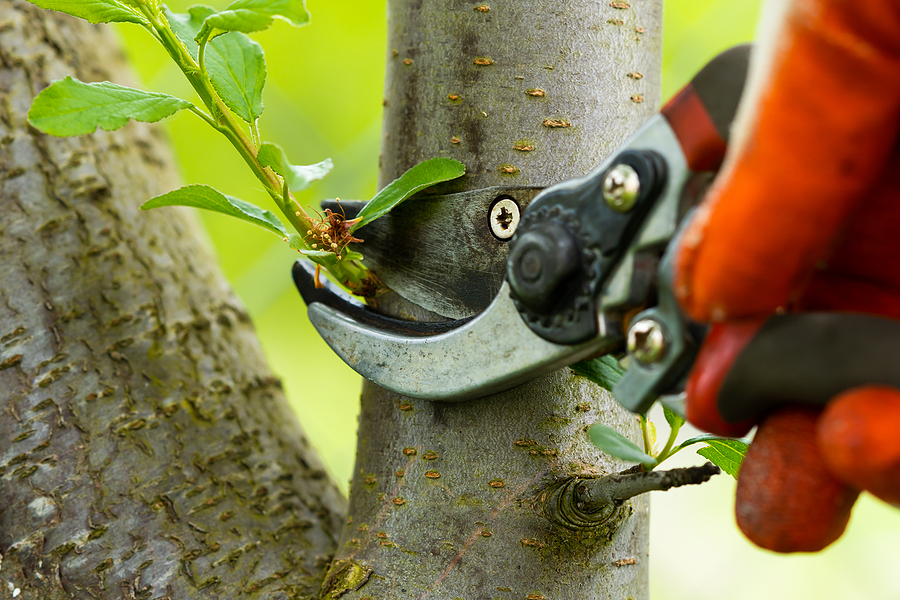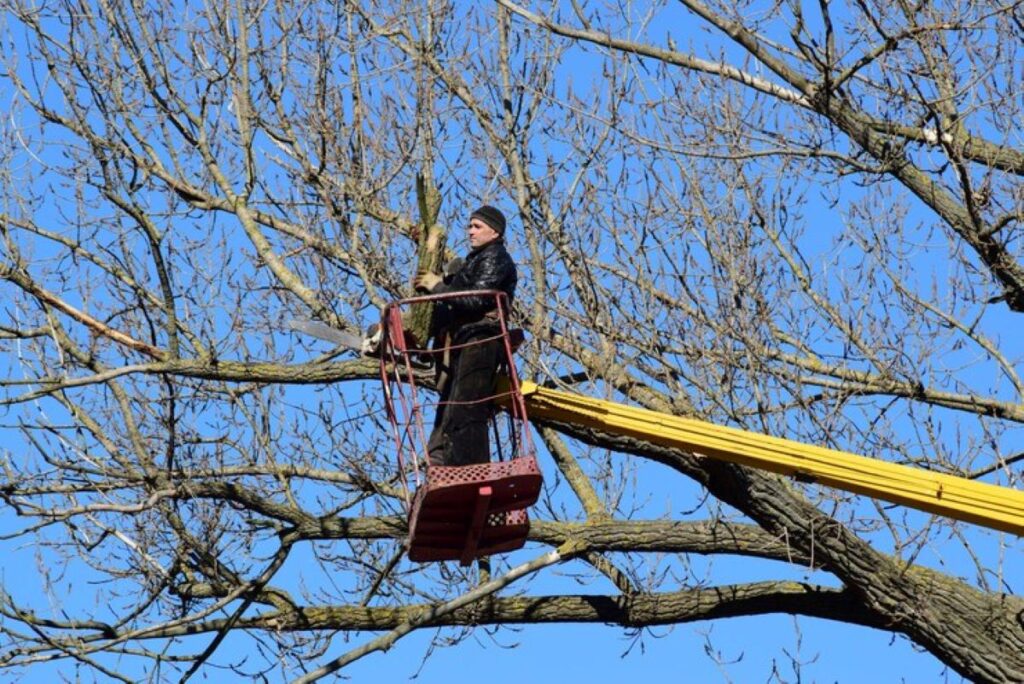Tree pruning is not just an aesthetic choice; it’s essential for the health and longevity of trees. Properly pruned trees are less susceptible to disease, better able to withstand adverse weather conditions, and more likely to provide pleasing landscaping. However, many homeowners wonder about the costs associated with tree pruning. This article delves into the intricacies of tree pruning, including its costs, factors that influence prices, and how to budget for this vital service.
Understanding Tree Pruning
Tree pruning involves the careful removal of specific parts of a tree, including branches, stems, and roots. This procedure aims to improve the tree’s structure, health, and aesthetics. It is a horticultural practice that requires skill and knowledge to achieve the intended results without causing harm to the tree. Proper pruning techniques can help ensure that trees have a strong framework, allowing them to withstand environmental stresses such as wind and snow. Moreover, understanding the biology of trees can significantly enhance the effectiveness of pruning, as it allows for more informed decisions about which branches to remove and when.
What is Tree Pruning?
Pruning can be categorized into several types: crown thinning, crown raising, crown reduction, and directional pruning. Each type serves a different purpose and is performed at different times of the year with different tree pruning cost, depending on the tree species and desired outcome. For instance, crown thinning is often done to reduce the density of the canopy, allowing more light to penetrate and air to circulate, which can significantly benefit the tree’s overall health. The main goal of tree pruning is to promote healthy growth and maintain the tree’s natural shape, but it can also be an art form, as skilled pruners can shape trees into aesthetically pleasing forms that complement their surroundings.
Importance of Tree Pruning
Proper tree pruning has numerous benefits, including enhancing tree vitality, reducing risks from falling branches, and promoting fruit production in fruit-bearing trees. Additionally, regular pruning helps to prevent pests and diseases, ensuring that trees remain healthy for years to come. A well-maintained tree not only adds beauty to your landscape but also increases property value. Furthermore, pruning can help manage the size of trees, making them more suitable for urban environments where space is limited. By keeping trees at a manageable height and spread, homeowners can minimize conflicts with power lines and structures, thereby ensuring safety and reducing maintenance costs associated with overgrown trees.
Factors Influencing Tree Pruning Cost
When considering the costs of tree pruning, several factors can influence how much you end up paying. Understanding these can help homeowners make informed decisions and budget effectively for their tree care needs.
Size and Number of Trees
Larger trees generally require more time and labor to prune effectively. The size of the tree will dictate the tools needed, the number of personnel required, and the time it takes to perform the job. Additionally, if you have multiple trees that need pruning, you may consider a bulk service deal, which could lower the overall cost. Moreover, the height of the trees plays a significant role; tall trees often necessitate the use of specialized equipment like cherry pickers or cranes, which can further inflate the cost due to rental fees and additional labor involved in operating such machinery.
Tree Species and Condition
Different species of trees require different pruning techniques and frequency. Trees that are diseased or damaged may require more extensive treatment and care, which could increase costs. More invasive species or those that grow rapidly may necessitate more frequent pruning sessions, contributing to higher overall expenses. Additionally, certain species may have specific growth patterns or flowering cycles that dictate the best time for pruning, which can affect scheduling and labor availability. For instance, flowering trees often need to be pruned right after blooming to ensure they flourish in the next season, adding another layer of complexity to the planning process.
Location and Accessibility
The location of your trees can also affect pruning costs. Trees that are located in hard-to-reach areas, such as near power lines or in dense gardens, may require specialized equipment and additional safety precautions. These increased challenges can lead to higher labor costs, as the professionals will spend more time addressing these concerns. Furthermore, if your trees are situated on a slope or uneven terrain, this can complicate the pruning process, requiring additional safety measures and potentially increasing the time needed to complete the job. Proximity to neighboring properties can also pose challenges, as tree care professionals must take extra precautions to avoid damage to adjacent landscapes or structures, which can further impact the overall cost of the service.
Average Cost of Tree Pruning Services
The average cost of tree pruning can vary significantly based on the aforementioned factors, placing the price range typically between $200 and $2,000. Local rates may differ based on the competition and demand for tree care services. Additionally, the type of tree and its condition can greatly influence the final cost; for instance, mature trees or those that require specialized techniques may incur higher fees due to the increased labor and expertise needed.
Local vs. Professional Services
Choosing between local arborists and larger, professional tree service companies can impact your budget. While local services may offer competitive pricing, professional companies may provide better insurance, warranties, and certified expertise. It’s essential to weigh the potential savings against the level of service and safety offered. Local arborists often have a deep understanding of the regional flora and may be more attuned to the specific needs of your trees, which can lead to more tailored care. On the other hand, established companies may have access to advanced equipment and a broader range of services, such as emergency tree removal or disease management, which can be invaluable in certain situations.
Hourly Rates vs. Flat Rates
Tree services may charge either hourly rates or flat fees for their services. Hourly rates typically range from $50 to $100 per hour, depending on the company’s experience and the complexity of the job. Flat rates, on the other hand, provide a total cost for the entire job, which can sometimes be more budget-friendly if you require extensive services. It’s important to discuss the scope of work with your service provider upfront to ensure clarity on what is included in the pricing. Some companies may offer free estimates, which can help you compare costs and services effectively. Additionally, factors such as the height of the tree, the location of the job (e.g., proximity to power lines), and the time of year can also play a role in determining whether an hourly or flat rate is more advantageous for your specific situation.

How to Budget for Tree Pruning
Budgeting for tree pruning requires evaluating your needs, identifying potential costs, and planning ahead to ensure you get the necessary care without exceeding your budget. Here are some strategies to help you manage your tree pruning expenses effectively.
Estimating Your Tree Pruning Costs
Start by assessing your trees: consider their size, health, and the type of services they may require. Contact several local service providers for quotes, and don’t hesitate to ask about any hidden fees. Understanding these aspects will give you a better idea of how to allocate your budget. Additionally, consider the frequency of pruning needed for different species; some trees may require annual maintenance, while others can thrive with less frequent attention. This knowledge can help you plan your budget over the long term, ensuring you set aside enough funds for regular care.
Saving Tips for Tree Pruning
To save on tree pruning costs, consider the following tips:
- Schedule your pruning during the off-season when demand is lower.
- Bundle multiple tree care services with the same provider for discounts.
- Research local garden clubs or community programs that may offer discounted services.
- Regularly care for your trees to prevent extensive pruning needs.
Moreover, investing in basic tree care tools can also lead to savings in the long run. For instance, pruning shears, loppers, and saws can help you manage minor trimming tasks yourself, reducing the need for professional services. However, it’s essential to educate yourself on proper techniques to avoid damaging the trees. Consider attending workshops or watching instructional videos to enhance your skills. Furthermore, maintaining a healthy environment for your trees, such as ensuring adequate watering and mulching, can minimize the need for heavy pruning, ultimately saving you money and keeping your trees vibrant and flourishing.
Frequently Asked Questions about Tree Pruning Costs
Homeowners often have several questions regarding tree pruning costs. Clarifying these can help demystify the service and aid in better decision-making.
Can I Prune My Own Trees to Save Money?
While it is possible for homeowners to prune their own trees, it is important to have a good understanding of proper techniques. Incorrect pruning can harm the tree, leading to increased health risks or even the tree’s death. If you opt to prune independently, invest in proper tools and educate yourself about the best practices. Additionally, consider the specific species of the tree, as different types may have unique pruning requirements. For instance, flowering trees may need to be pruned at specific times of the year to ensure optimal blooming, while others may require different approaches to maintain their shape and health.

Does Insurance Cover Tree Pruning?
In some cases, homeowners’ insurance may cover tree pruning, especially if it is necessary due to storm damage or the removal of hazardous branches. Check your policy and speak with your insurance provider for clarity on coverage to better understand any financial responsibility you may incur. Furthermore, it’s worth noting that some insurance policies might offer discounts for proactive tree maintenance, recognizing that well-maintained trees can reduce the risk of damage to your property. Engaging with a professional service can not only help you stay compliant with your insurance requirements but also ensure that the work is done safely and effectively.
Moreover, understanding the timing and frequency of tree pruning can also influence costs. Trees typically require pruning every few years, depending on their growth rate and health. Seasonal factors play a significant role; for instance, pruning during the dormant season can minimize stress on the tree and promote healthier growth. Homeowners should also consider the potential for additional costs associated with cleanup and disposal of branches and debris after pruning, which can vary based on the size and number of trees being serviced. By being well-informed about these aspects, you can make more strategic decisions regarding tree care and budgeting.
More to Read : Professional Tree Pruning Services in Sydney’s Eastern Suburbs